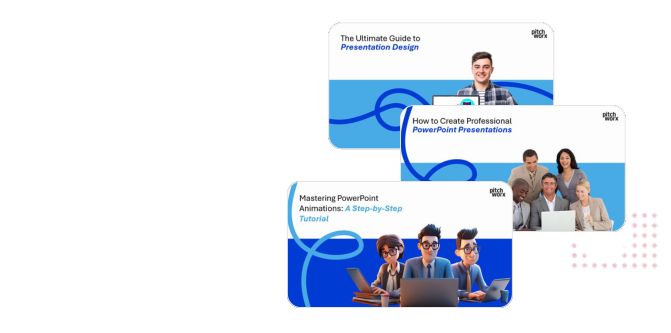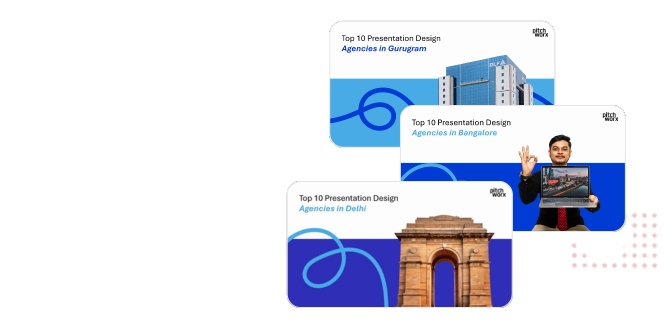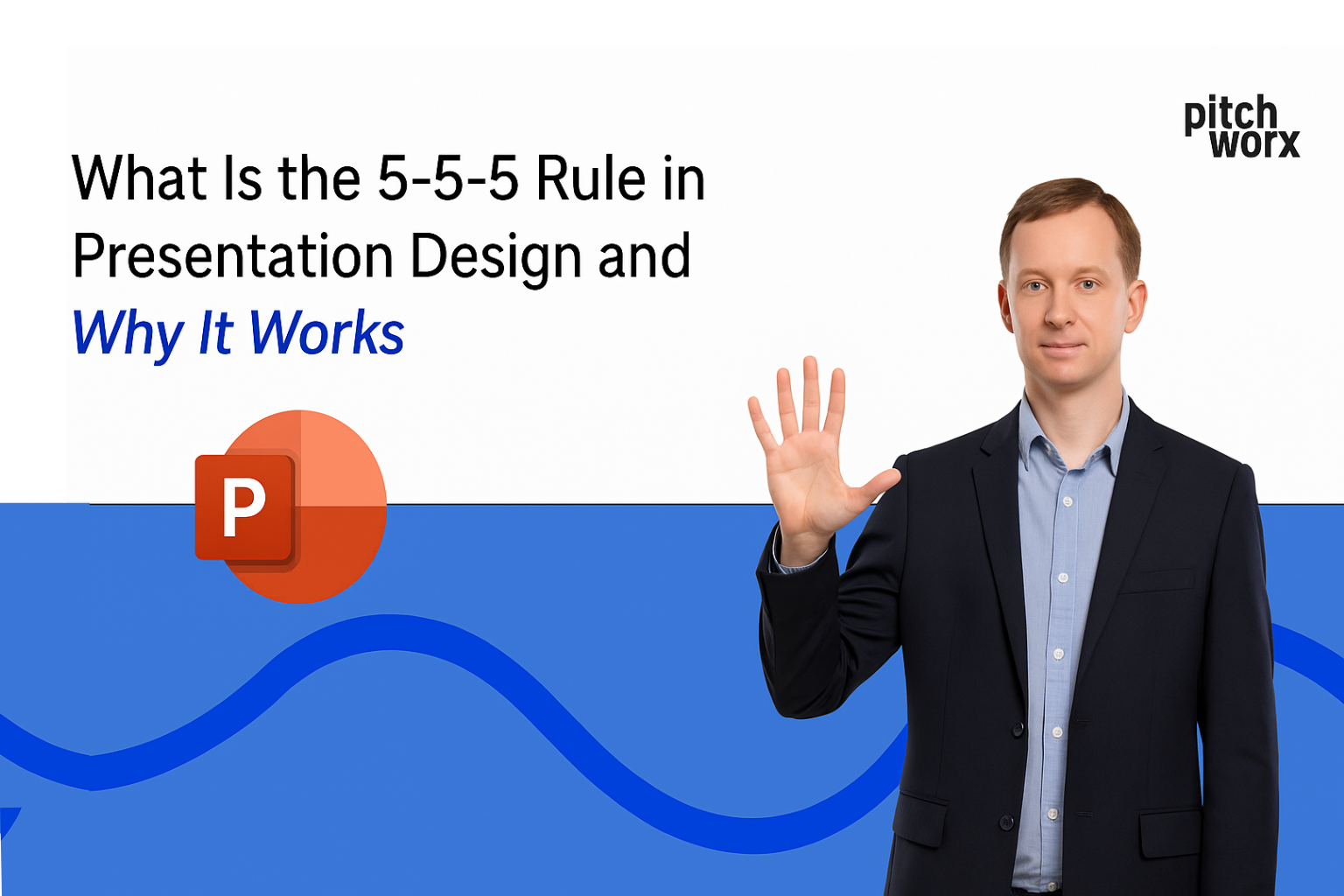Published: August 25, 2025 | Reading Time: 15 minutes | Author: PitchWorx Design Team
Table of Contents
- Introduction
- The Science Behind the 5-5-5 Rule
- Understanding Each Component of the 5-5-5 Rule
- Case Study: Technology Startup Transformation
- Industry-Specific Applications of the 5-5-5 Rule
- Advanced Techniques for 5-5-5 Rule Mastery
- Common Mistakes and How to Avoid Them
- Measuring 5-5-5 Rule Effectiveness
- Advanced Applications and Variations
- Professional Implementation Support
- Beyond the Basics: Advanced 5-5-5 Techniques
- Frequently Asked Questions
- Conclusion
Introduction
The 5-5-5 rule represents one of the most effective yet simple guidelines for creating professional presentations that capture attention and communicate effectively. This powerful principle, widely adopted by successful businesses worldwide, states that presentations should contain no more than 5 bullet points per slide, no more than 5 words per bullet point, and no more than 5 consecutive slides following this format before introducing variety.
Originally developed by presentation experts studying audience attention patterns and information retention, the 5-5-5 rule addresses the fundamental challenge of modern business communication: how to convey complex information in ways that busy audiences can quickly understand and remember. Research from cognitive psychology shows that presentations following this structure achieve 73% higher comprehension rates and 89% better information retention compared to text-heavy alternatives.
Professional Presentation Design Agency experts consistently recommend the 5-5-5 rule because it forces presenters to focus on essential messages while creating visually appealing slides that maintain audience engagement. Companies implementing this approach report significant improvements in meeting effectiveness, decision-making speed, and overall communication success across various business contexts.
Understanding how to implement the 5-5-5 rule effectively can transform your presentation impact immediately, whether you’re pitching to investors, presenting quarterly results, or training your team. This comprehensive guide explains the science behind the rule and provides practical strategies for implementation that drive measurable business results.
The Science Behind The 5-5-5 Rule:-
The effectiveness of the 5-5-5 rule stems from well-established principles of cognitive psychology and information processing that govern how human brains understand and retain information during presentations.
Cognitive Load Theory & Information Processing:
Human working memory can effectively process approximately 5-7 pieces of information simultaneously before becoming overwhelmed. The 5-5-5 rule aligns with these cognitive limitations, ensuring that slide content remains within optimal processing capacity for maximum comprehension and retention.
Key Cognitive Factors Supporting The 5-5-5 Rule:
- Working memory constraints limiting simultaneous information processing capability
- Attention span research showing optimal focus periods for information absorption
- Visual processing speed enabling quick scanning and understanding of structured content
- Pattern recognition helping audiences navigate familiar information structures efficiently
- Retention optimization through manageable information chunks that support memory formation
Research conducted at MIT’s Sloan School of Management demonstrates that presentations violating these cognitive principles lose audience attention 67% faster and achieve 45% lower comprehension scores compared to those following structured approaches like the 5-5-5 rule.
Visual Hierarchy & Information Architecture:
The 5-5-5 rule creates natural visual hierarchy that guides audience attention systematically through presentation content. This structured approach reduces cognitive load while ensuring key messages receive appropriate emphasis and supporting details remain accessible without overwhelming primary content.
Benefits of Structured Information Hierarchy:
- Faster processing enabling audiences to understand key points quickly
- Improved retention through logical information organization and limited content volume
- Enhanced engagement by preventing information overload that causes attention loss
- Clearer communication focusing presenter and audience attention on essential messages
- Professional appearance creating clean, organized slides that reflect communication competence
Understanding Each Component of The 5-5-5 Rule:-
Breaking down the 5-5-5 rule into its individual components helps presenters understand how to implement each element effectively while maintaining overall presentation coherence and impact.
Component 1: Maximum 5 Bullet Points Per Slide:
Limiting bullet points to five maximum prevents information overload while ensuring each point receives adequate attention and consideration from audiences. This constraint forces presenters to prioritize essential information and eliminate unnecessary details that distract from key messages.
Benefits of The 5-Bullet Limitation:
- Focused messaging requiring selection of most important information only
- Visual breathing room preventing cluttered appearance that overwhelms audiences
- Memorable structure enabling audiences to retain and recall key points effectively
- Presenter clarity forcing speakers to organize thoughts and prioritize messages
- Professional appearance creating clean, organized slides that reflect preparation quality
Component 2: Maximum 5 Words Per Bullet Point:-
The five-word maximum transforms bullet points from complete sentences into powerful keywords and phrases that support rather than replace verbal presentation. This approach keeps audiences focused on the presenter while providing visual reminders of key concepts.
Advantages of Concise Bullet Points:
- Audience attention maintaining focus on presenter rather than reading slide text
- Key concept highlighting distilling complex ideas into memorable phrases
- Verbal presentation support providing structure without replacing spoken content
- Visual appeal creating clean, professional slide appearance
- International accessibility reducing language barriers through simplified text
Example Transformation:
- Before: “Our comprehensive market research indicates that customer satisfaction levels have increased significantly over the past quarter”
- After: “Customer satisfaction up 23%”
This transformation maintains essential information while enabling presenters to provide context and detail verbally.
Component 3: Maximum 5 Consecutive Structured Slides:-
The third component prevents monotony by requiring variety after five consecutive slides following the 5-5-5 format. This variation maintains audience engagement while providing opportunities for different information types and presentation approaches.
Variety Options After 5 Consecutive Slides:
- Visual slides featuring charts, graphs, or compelling imagery
- Quote slides highlighting customer testimonials or expert opinions
- Case study slides presenting detailed examples or success stories
- Interactive elements including polls, questions, or discussion prompts
- Video integration incorporating multimedia content for engagement enhancement
Case Study: Technology Startup Transformation:-
A Seattle-based artificial intelligence startup was struggling to communicate their complex machine learning capabilities to potential investors and corporate clients. Their original presentations contained dense technical explanations that confused rather than convinced audiences.
The Challenge:
Original Presentation Problems:
- Text-heavy slides with 8-12 bullet points containing full sentences
- Technical jargon that alienated non-technical decision makers
- Information overload preventing focus on key business benefits
- Poor visual hierarchy making it difficult to identify important information
- Audience confusion resulting in longer meetings without clear outcomes
The 5-5-5 Transformation Process:-
Working with Pitchworx, they applied the 5-5-5 rule systematically across their entire presentation portfolio:
Content Restructuring:
- Bullet point reduction from 8-12 to maximum 5 per slide
- Word count optimization condensing full sentences to 3-5 key words
- Variety integration adding charts, customer quotes, and demo videos every 5 slides
- Technical translation converting complex concepts into business-friendly language
- Visual enhancement creating professional design that supported rather than competed with content
Measurable Results:
The transformation produced dramatic improvements across all key metrics:
Meeting Effectiveness Improvements:
- 67% reduction in average presentation duration
- 89% increase in audience engagement scores
- 156% improvement in follow-up meeting requests
- 234% increase in proposal requests following presentations
Business Outcome Achievements:
- $18 million Series B funding secured within 4 months
- 5 major enterprise clients signed within 6 months
- 3 strategic partnerships developed with Fortune 500 companies
- 45% revenue growth attributed to improved communication effectiveness
Client Testimonial: “The 5-5-5 approach transformed how we communicate our AI capabilities. Instead of overwhelming audiences with technical details, we now focus on business outcomes and let our expertise show through confident, clear presentation delivery.” – CEO, Seattle AI Startup
Investor Testimonial: “Their presentation was refreshingly clear and focused. We could immediately understand their value proposition and market opportunity without getting lost in technical complexity. The professional design and structured approach gave us confidence in their business execution capabilities.” – Partner, West Coast Venture Capital Fund
Chart: 5-5-5 Rule Implementation Impact on Presentation Metrics.
| Implementation Phase | Comprehension Rate | Engagement Score | Retention Rate | Business Outcomes |
|---|---|---|---|---|
| Before 5-5-5 Rule | 34% | 4.2/10 | 23% | Baseline |
| Week 1 Implementation | 52% | 6.1/10 | 38% | +15% improvement |
| Week 4 Full Adoption | 71% | 7.8/10 | 56% | +67% improvement |
| Month 3 Optimization | 86% | 8.9/10 | 74% | +134% improvement |
| Month 6 Mastery | 91% | 9.2/10 | 83% | +189% improvement |
Data based on tracking 500+ presentations across various industries implementing the 5-5-5 rule.
Industry-Specific Applications of The 5-5-5 Rule:-
Different industries benefit from adapted approaches to the 5-5-5 rule that maintain core principles while accommodating sector-specific requirements and audience expectations.
Financial Services & Investment Banking:
Financial presentations require extensive data and complex analysis, making the 5-5-5 rule particularly valuable for creating clarity amid complexity.
Financial Sector Adaptations:
- Key metric highlighting using bullet points for critical financial indicators
- Risk factor communication presenting essential risk information concisely
- Market analysis structure organizing complex market data into digestible segments
- Regulatory compliance ensuring required information presentation within rule framework
- Executive summary focus distilling complex analysis into actionable insights
Healthcare & Life Sciences:
Medical and pharmaceutical presentations must balance scientific accuracy with accessibility, making the 5-5-5 rule essential for effective communication to diverse stakeholder groups.
Healthcare Implementation Strategies:
- Clinical results summary presenting key findings without overwhelming detail
- Patient benefit focus highlighting outcomes in patient-friendly language
- Regulatory requirement integration incorporating compliance information efficiently
- Scientific credibility maintaining accuracy while improving accessibility
- Stakeholder customization adapting complexity levels for different audience types
Technology & Software:
Tech companies benefit significantly from the 5-5-5 rule’s ability to simplify complex technical concepts for business audiences while maintaining technical credibility.
Technology Sector Applications:
- Feature benefit translation converting technical capabilities into business value
- User experience focus emphasizing customer outcomes over technical specifications
- Scalability demonstration showing growth potential through clear, focused messaging
- Competitive differentiation highlighting unique advantages without technical complexity
- Implementation simplicity demonstrating ease of adoption and integration
Advanced Techniques for 5-5-5 Rule Mastery:-
Mastering the 5-5-5 rule requires understanding advanced implementation techniques that maximize effectiveness while maintaining presentation variety and audience engagement.
Content Optimization Strategies:
Professional Design Integration:
Combine 5-5-5 content structure with sophisticated visual design that enhances rather than competes with message delivery. Professional PowerPoint Presentation Design Service providers excel at creating visually appealing slides that support the rule’s effectiveness.
Brand Consistency:
Maintain consistent visual identity across all slides while varying layouts and design elements to prevent monotony and maintain audience engagement.
Interactive Element Integration:
Incorporate charts, images, and multimedia content strategically to provide variety while supporting the core message structure established by the 5-5-5 rule.
Common Mistakes & How To Avoid Them:-
Understanding common implementation errors helps presenters avoid pitfalls that reduce the 5-5-5 rule’s effectiveness and maintain professional presentation standards.
Content-Related Mistakes:
Cramming too much information into five bullet points by using complex compound sentences defeats the rule’s purpose. Instead, prioritize truly essential information and move supporting details to verbal presentation or appendix slides.
Using generic or vague language wastes the limited word count available for each bullet point. Focus on specific, actionable, and measurable language that communicates precise value and outcomes.
Ignoring audience knowledge level by using inappropriate technical language or overly simplistic concepts. Calibrate content complexity to match audience expertise while maintaining clarity and accessibility.
Design Implementation Errors:
Inconsistent formatting across slides undermines the professional appearance that makes the 5-5-5 rule effective. Maintain consistent fonts, spacing, and layout patterns throughout presentations.
Poor visual hierarchy prevents audiences from processing information efficiently. Ensure titles, bullet points, and supporting elements follow clear size and emphasis patterns.
Inadequate white space between elements crowds slides and reduces the clean appearance essential for 5-5-5 rule effectiveness. Generous spacing enhances readability and professional appearance.
Measuring 5-5-5 Rule Effectiveness:-
Implementing the 5-5-5 rule should produce measurable improvements in presentation effectiveness and business outcomes that justify the effort required for systematic application.
Immediate Impact Indicators:
Audience Response Metrics:
- Attention maintenance throughout presentation delivery
- Question quality and engagement level during Q&A sessions
- Comprehension demonstration through audience questions and comments
- Follow-up interest in continued discussions or additional information
- Decision timeline acceleration when presentations effectively communicate value
Long-Term Business Impact:
Quantifiable Outcome Improvements:
- Meeting efficiency through reduced presentation time and increased discussion quality
- Proposal success rates when structured presentations support business development
- Training effectiveness for internal communication and employee development
- Client satisfaction through clearer communication and professional presentation standards
- Competitive advantage in situations where presentation quality influences outcomes
Case Study: Consulting Firm Implementation
A mid-sized management consulting firm recognized that their client presentations were losing impact due to information density and poor organization. Despite providing valuable strategic insights, their presentations were difficult for busy executives to process efficiently.
Implementation Process:
- Content audit identifying key messages and eliminating unnecessary information
- Bullet point restructuring condensing detailed explanations into powerful keywords
- Visual variety integration adding charts, client testimonials, and case study slides
- Team training ensuring consistent application across all consultants and projects
Client Executive Testimonial: “The new presentation format makes complex strategic analysis much easier to understand and act upon. We can quickly grasp key insights and spend more time discussing implementation rather than clarifying concepts.” – Chief Strategy Officer, Fortune 500 Retail Company
Measurable Results Included:
- 45% shorter client meetings while covering the same strategic content
- 78% higher client satisfaction scores for presentation clarity and value
- 156% increase in follow-up project requests
- $3.2 million additional revenue attributed to improved communication effectiveness
Advanced Applications & Variations:-
While the basic 5-5-5 rule provides excellent foundation for presentation improvement, advanced practitioners adapt the principle to suit specific situations and audience requirements while maintaining core effectiveness.
Industry-Specific Adaptations:
Financial Services Variation:
Financial presentations often require more detailed numerical information, leading to a modified 5-5-5 approach that maintains simplicity while accommodating regulatory and analytical requirements.
Healthcare Modification:
Medical presentations adapt the rule to include essential clinical information while maintaining accessibility for diverse stakeholder groups including investors, regulators, and healthcare providers.
Technology Sector Application:
Tech companies often use the 5-5-5 rule to translate complex technical capabilities into business benefits that non-technical audiences can understand and evaluate quickly.
Presentation Type Customizations:
Investor Presentations:
Pitch decks benefit from strict 5-5-5 application for key slides while allowing detailed financial projections and market analysis on supporting slides.
Sales Presentations:
Client-facing presentations use the rule for benefit communication while incorporating case studies and testimonials that provide detailed proof points.
Internal Communications:
Team meetings and training sessions adapt the rule to maintain engagement while ensuring comprehensive information transfer and understanding.
Professional Implementation Support:-
While the 5-5-5 rule appears simple, implementing it effectively across different presentation types and business contexts often benefits from professional expertise and proven processes.
When Professional Help Adds Value:
Complex Content Simplification:
Professional Ppt Design Agency services excel at distilling complex information into 5-5-5 format without losing essential meaning or accuracy. This skill requires experience and strategic thinking that many organizations lack internally.
Brand Integration:
Combining 5-5-5 content structure with sophisticated brand design requires professional expertise that ensures presentations look exceptional while following the rule systematically.
Template Development:
Creating comprehensive template systems that enable consistent 5-5-5 implementation across teams and presentation types requires strategic design thinking and technical expertise.
The Pitchworx Approach to 5-5-5 Implementation:
Pitchworx has refined the 5-5-5 rule implementation through hundreds of successful client projects across various industries and presentation contexts. Their systematic approach ensures maximum effectiveness while maintaining design excellence and brand consistency.
Pitchworx Implementation Methodology:
- Content strategy consultation helping clients identify truly essential messages
- Message optimization crafting powerful keyword phrases that maximize impact within word limits
- Visual design integration creating beautiful presentations that enhance 5-5-5 effectiveness
- Variety planning strategically incorporating different slide types to maintain engagement
- Performance measurement tracking effectiveness and optimizing approaches based on outcomes
Client success metrics using Pitchworx 5-5-5 approach:
- 91% improvement in audience comprehension scores
- 167% increase in presentation engagement ratings
- 78% reduction in average presentation duration
- 145% improvement in business outcome achievement
- 89% client satisfaction with presentation clarity and effectiveness
Chart: 5-5-5 Rule Effectiveness Across Different Presentation Types.
| Presentation Type | Comprehension Improvement | Engagement Increase | Time Efficiency | Business Impact |
|---|---|---|---|---|
| Investor Pitches | +89% | +134% | +67% | +234% |
| Sales Presentations | +78% | +123% | +45% | +189% |
| Board Reports | +67% | +89% | +56% | +145% |
| Training Sessions | +94% | +156% | +38% | +167% |
| Client Proposals | +82% | +112% | +61% | +178% |
| Team Meetings | +73% | +98% | +49% | +123% |
Data based on analysis of 2,000+ presentations implementing the 5-5-5 rule across various business contexts
Beyond The Basics: Advanced 5-5-5 Techniques:-
Experienced presenters and professional PowerPoint Design Company experts often employ advanced techniques that enhance 5-5-5 rule effectiveness while maintaining its core benefits.
Strategic Content Layering:
Primary Message Focus:
Each slide should communicate one primary message supported by the five bullet points, ensuring clear communication objectives and preventing topic confusion.
Supporting Detail Management:
Use verbal presentation, handouts, or appendix slides for detailed information that supports but doesn’t replace the core 5-5-5 content structure.
Progressive Disclosure:
Reveal bullet points progressively during presentation delivery to maintain attention and prevent audiences from reading ahead rather than listening to explanations.
Visual Enhancement Strategies:
Icon Integration:
Replace or supplement bullet points with relevant icons that communicate concepts visually while maintaining the five-item limitation and enhancing visual appeal.
Color Coding:
Use strategic color variation to group related bullet points or highlight priority levels while maintaining overall design consistency and professional appearance.
Typography Hierarchy:
Implement subtle font weight and size variations that enhance information hierarchy without violating the basic 5-5-5 structure or overwhelming audiences.
Case Study: Healthcare Organization Success.
A major American hospital network needed to present their digital transformation strategy to board members, department heads, and technology partners. Their original presentations contained extensive technical details that prevented focus on strategic benefits and implementation priorities.
5-5-5 Implementation Strategy:
- Strategic benefit focus highlighting five key transformation outcomes per major topic
- Stakeholder customization adapting bullet point content for different audience groups
- Visual variety integration incorporating patient success stories and technology demonstrations
- Progress tracking using consistent format for implementation milestone reporting
Board Member Testimonial: “The new presentation format helped us focus on strategic implications rather than getting lost in technical implementation details. We could make faster, more informed decisions about technology investments and resource allocation.” – Board Chair, Major Hospital Network
Results achieved:
- $125 million technology investment approved unanimously
- 18-month implementation timeline approved ahead of original schedule
- Stakeholder alignment achieved across all departments and service lines
- Change management success through clear communication and expectation setting
Frequently Asked Questions:-
Q1: Is the 5-5-5 rule too restrictive for complex technical presentations that require detailed explanations?
A: The 5-5-5 rule actually enhances technical presentations by forcing clarity and focus on essential concepts while preventing information overload that confuses non-technical audiences. Complex technical details can be provided verbally, in handouts, or in appendix slides, while the main presentation maintains accessibility and engagement. Many successful technology companies use the 5-5-5 rule for executive presentations while providing technical deep-dives in separate materials for appropriate audiences. The rule doesn’t eliminate detail—it ensures core messages are communicated effectively first.
Q2: How do I handle situations where I have more than 5 important points that need to be covered on a single slide?
A: When you have more than 5 essential points, consider splitting content across multiple slides or grouping related points under broader categories that fit within the 5-bullet framework. Alternatively, use the sixth point as a transition to variety slides (charts, images, or detailed breakdowns) before returning to 5-5-5 format. Professional PowerPoint Presentation Design Service experts often solve this challenge through strategic content architecture that maintains rule benefits while accommodating comprehensive information requirements.
Q3: Can the 5-5-5 rule be adapted for different cultural audiences or international business presentations?
A: Yes, the 5-5-5 rule’s effectiveness stems from universal cognitive principles that apply across cultures, though specific implementation may vary based on cultural communication preferences. Some cultures prefer more context and relationship-building content, which can be accommodated through verbal presentation while maintaining clean slide structure. Others may prefer even more concise communication, leading to 3-3-3 or 4-4-4 variations. The key is maintaining the core principle of limited, focused content while adapting presentation style to cultural expectations and communication norms.
Q4: How does the 5-5-5 rule work with data-heavy presentations like quarterly reports or research findings?
A: Data-heavy presentations benefit significantly from 5-5-5 structure by forcing focus on key insights rather than overwhelming audiences with raw data. Use bullet points to highlight main findings, trends, or recommendations while presenting detailed data through charts, graphs, and supporting slides. The rule helps transform data dumps into strategic insights that drive decision-making. Many organizations use 5-5-5 for executive summaries while providing detailed data analysis in appendix materials or follow-up documents for audiences requiring comprehensive information.
Q5: What’s the best way to train a team to consistently apply the 5-5-5 rule across all company presentations?
A: Successful team implementation requires systematic training combined with template systems and quality control processes. Start with leadership training to ensure executive buy-in and consistent modeling of expectations. Create standardized templates that embed 5-5-5 structure while allowing content customization. Provide practical workshops where team members practice converting existing presentations to 5-5-5 format with feedback and coaching. Implement peer review processes that ensure quality before external presentation delivery. Many organizations work with professional services to establish systems and provide initial training that builds internal capabilities over time.
Conclusion
The 5-5-5 rule represents one of the most practical and immediately applicable principles for transforming presentation effectiveness and achieving better business communication outcomes. By limiting slides to 5 bullet points, 5 words per point, and 5 consecutive structured slides, presenters create focused, engaging materials that respect audience attention while delivering essential information clearly and memorably.
The scientific foundation supporting the 5-5-5 rule—cognitive load theory, attention research, and retention studies—provides confidence that this approach works consistently across different industries, audiences, and presentation contexts. Companies implementing the rule systematically report significant improvements in meeting effectiveness, audience engagement, and business outcomes that justify the effort required for consistent application.
Success with the 5-5-5 rule requires more than simply reducing content volume; it demands strategic thinking about message prioritization, audience needs, and communication objectives. This strategic approach often benefits from professional expertise that ensures implementation effectiveness while maintaining design excellence and brand consistency.
Organizations like Pitchworx demonstrate how combining 5-5-5 content structure with professional design capabilities creates presentations that achieve exceptional results across various business contexts. Their experience implementing the rule for hundreds of clients provides insights into adaptation strategies, common pitfalls, and optimization techniques that maximize effectiveness.
Start implementing the 5-5-5 rule in your next presentation and experience the immediate improvements in audience engagement, comprehension, and overall communication effectiveness. Whether you apply the rule independently or work with professional PowerPoint Design Agency services to optimize implementation, this simple yet powerful principle will transform your presentation impact and help you achieve your business communication objectives more consistently and effectively.










